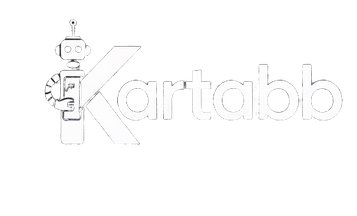Introduction
In today’s competitive job market, a strong web developer portfolio is essential to showcase your skills, experience, and projects. Whether you’re a front-end, back-end, or full-stack developer, your portfolio should demonstrate your expertise and ability to build real-world applications.
In this guide, we’ll explore step-by-step tips to create a portfolio that stands out and impresses potential employers or clients.
1. Define Your Portfolio Goals 🎯
Before you start building your portfolio, ask yourself:
✅ Are you looking for a job, freelance clients, or personal branding?
✅ What technologies and skills do you want to highlight?
✅ Who is your target audience (recruiters, startups, agencies)?
💡 Pro Tip: Align your portfolio with your career goals. If you want to be a React Developer, focus on React projects rather than general web design.
2. Choose the Right Platform 🌐
You can build your portfolio using different platforms, depending on your skills:
✅ Personal Website (Recommended)
- Use HTML, CSS, JavaScript
- Frameworks like Next.js, Gatsby, or React for a dynamic experience
- Hosting: Netlify, Vercel, GitHub Pages
✅ Portfolio Builders (No Code)
- Wix, Webflow, Carrd (for non-coders)
✅ GitHub Portfolio
- Showcase your coding skills with repositories and README files
💡 Pro Tip: A custom domain (e.g., yourname.dev) makes your portfolio look more professional.
3. Essential Sections of Your Portfolio 📌
A winning portfolio should have these key sections:
a) Clean & Professional Homepage
✅ A short, engaging introduction
✅ Your name, expertise, and a professional photo
✅ A strong CTA (Call-to-Action) – “Hire Me” / “See My Work”
b) About Me Section
✅ Who you are and what you do
✅ Your skills, experience, and technologies you specialize in
✅ Link to your resume (PDF or LinkedIn profile)
c) Projects Section (Most Important) 🚀
Showcase at least 3-6 high-quality projects:
- Live Demo: A working link to test your project
- GitHub Repository: So employers can review your code
- Case Study: Explain the problem, solution, tech stack, and challenges
💡 Pro Tip: Feature projects related to the job you want (e.g., an e-commerce site for a front-end role).
d) Skills & Tech Stack
✅ List relevant technologies: HTML, CSS, JavaScript, React, Node.js, Python, etc.
✅ Use icons or badges for better readability
e) Contact Section 📩
✅ Email, LinkedIn, GitHub, Twitter, and any other professional links
✅ Embed a contact form for easy outreach
💡 Pro Tip: A minimalistic & clean UI improves readability and professionalism.
4. Choose Projects That Highlight Your Strengths 🔥
Not all projects are created equal. Showcase quality over quantity!
🚀 Best Portfolio Project Ideas:
- Responsive Landing Page (HTML, CSS, JavaScript)
- Interactive To-Do List App (JavaScript, React)
- E-commerce Website (Full-stack: MERN or Django)
- Blog Platform with Authentication (React + Firebase)
- API-Based App (Weather App, Movie Database)
💡 Pro Tip: Show real-world problem-solving. For example, if you’re applying for a fintech job, build a finance-tracking app.
5. Optimize for SEO & Performance 🔍
A portfolio that ranks on Google = More Visibility & Job Offers
✅ Use SEO-friendly titles & meta descriptions
✅ Optimize page speed (compress images, lazy loading)
✅ Add structured data for search engines
✅ Use mobile-friendly, responsive design
💡 Pro Tip: Test your portfolio’s performance using Google PageSpeed Insights.
6. Add Testimonials & Social Proof ⭐
✅ Ask for recommendations from past clients, employers, or professors
✅ Showcase LinkedIn endorsements & GitHub contributions
✅ Add a testimonial slider for better presentation
💡 Pro Tip: If you’re a beginner, contribute to open-source projects for credibility.
7. Make It Interactive & Engaging 💡
A static portfolio is boring. Add interactive elements like:
✅ Dark mode toggle
✅ Animations using GSAP or Framer Motion
✅ Live coding challenges (CodePen embeds)
💡 Pro Tip: Keep animations subtle & smooth – avoid overwhelming users.
8. Deploy & Maintain Your Portfolio 🚀
Once your portfolio is ready, deploy it online:
✅ GitHub Pages, Netlify, Vercel (For static sites)
✅ Heroku, Render (For full-stack apps)
📌 Regular Updates:
- Keep adding new projects
- Update outdated links
- Improve UI/UX based on feedback
💡 Pro Tip: Treat your portfolio like a living document – always evolving!
Conclusion
A winning web developer portfolio is your best chance to land a job or client. By showcasing your best projects, optimizing for SEO, and making it interactive, you can stand out from the competition.
💬 Do you have a portfolio? Drop your link below for feedback! 🚀


1win ракета [url=https://mostbet5007.ru/]https://mostbet5007.ru/[/url] .
Your comment is awaiting moderation.